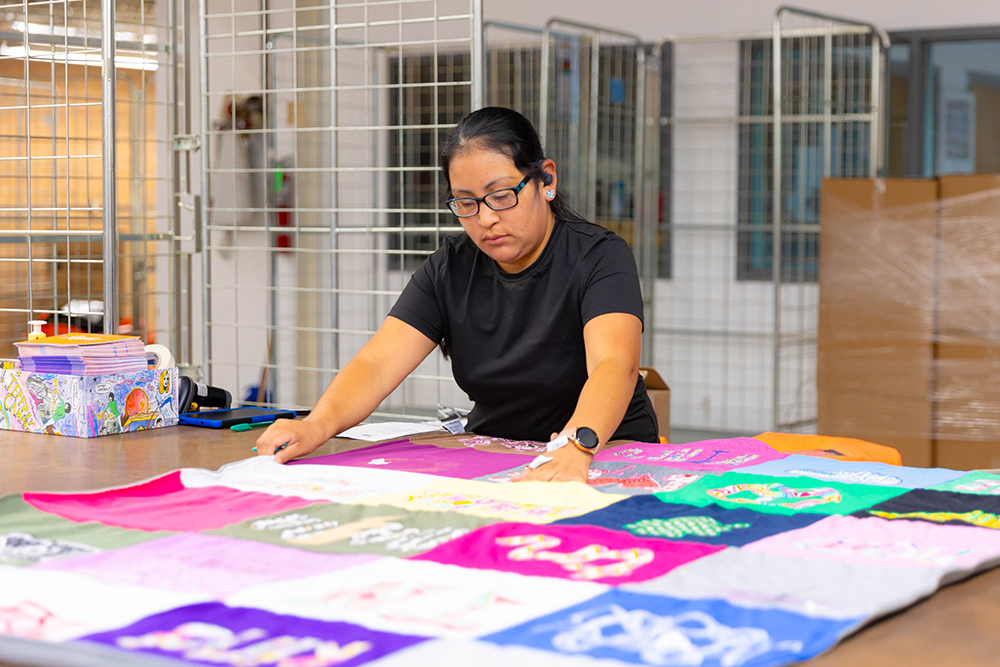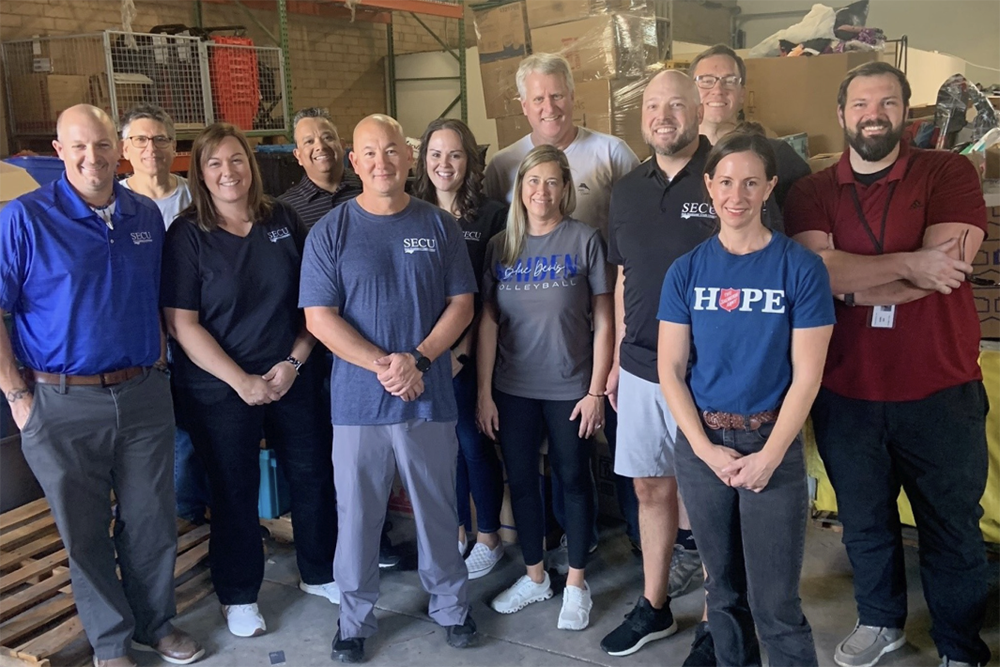
In this week’s Principle 6 Newsletter, Mike Mercer frames a vision for the future. What would a “cooperative economy” look like, and should we aim higher?
“What if co-ops started a movement? Something bigger than co-ops. Bigger than a co-op economy. Something co-ops could cause but wouldn’t need to own. Not exclusivity, but radical inclusivity,” he writes.
While you’re thinking about building the Main Street Movement, take a moment to consider how “cooperation among cooperatives” could accelerate that effort. NCBA CLUSA is on a mission to document Principle 6 collaborations across the country so we can identify trends, document best practices and share this knowledge with you—our fellow cooperators!
Share your example of Principle 6
Principle 6 Newsletter – The Main Street Movement
March 23, 2022
“To everything there is a season, and a time for every purpose under the heaven,” sang the Hebrew poet in Ecclesiastes. When Pete Seeger put that ancient maxim to folk music in the 1960s, it was, perhaps, a season for Americans to unravel fetters of intrusive togetherness. As we enter a new century, however, it is now past time to begin to reweave the fabric of our communities. – “Bowling Alone,” Robert D. Putnam, 2000
The world’s economic and ecological meltdowns demand that we now redesign our livelihoods, our enterprises, our communities, our organizations, our food system, our housing, and much more. This glorious reinvention has already begun, and many refer to it as the “sharing economy,” the “relationship economy,” the “cooperative economy,” the “grassroots economy,” or just the “new economy.” – “Practicing Law in the Sharing Economy,” Janelle Orsi, 2012
Throughout the years, mutualist institutions have been called many things and taken many forms—religious groups, communes, mutual aid societies, cooperatives, unions, mutuals, kibbutzim, tontines, fraternal societies, women’s organizations, trade associations—but they all spring from a common impulse: If neither government nor market forces are solving a problem that you and the people in your community share, why not solve it yourself? – “Mutualism,” Sara Horowitz, 2021

So, me and thee call ourselves co-op leaders. In that notion of self-concept, we must accept the responsibility of framing a vision for the future. We don’t need to invent the vision (few of us really do that, but “leaders” take the credit notwithstanding). We must, however, cause vision to exist. And, as you are painfully aware, vision must be widely and genuinely embraced if it is to be achieved. An embraced vision derives its relevance only in contrast to all the other conceivable visions.
A vision that is commonly espoused by this letter and other cooperative evangelists is that there will one day be a “cooperative economy” driven by—maybe even dominated by—cooperative enterprises. Never mind that employee ownership conversions are dominated by ESOPs, not worker co-ops. Or that condominiums, not housing co-ops are the structure of choice in most multi-family housing communities. Look beyond the strident individualism, sectoral isolation and cooperative identity drift that impedes collective co-op strategy development. Someday, somehow there will be a cooperative economy.
A vision that is commonly espoused by this letter and other cooperative evangelists is that there will one day be a “cooperative economy” driven by—maybe even dominated by—cooperative enterprises.
Could there be another vision?
Let’s think about how vision typically migrates in the co-op world.
Claude gets a new job as CEO of the local co-op. It could be the electric co-op, the food co-op, a credit union—doesn’t matter. Claude has an impressive resume, experienced in whatever discipline the co-op board thinks it needs. The board explains that the co-op exists solely for the benefit of its members. Over time, Claude learns that the board has a simple question for every new investment that he proposes: How will this benefit the members? He gets funny looks when he proposes joining the state association. He gets lots of questions when he suggests joining a national association. Imagine Claude’s excitement for proposing an investment of time and money into the local cooperative economy. These reward systems lead to independent, our-domain decision making. There isn’t much bandwidth (or vision) for supporting any meaningful form of common good.
After a couple of years, Claude has earned his stripes with the board. He names Mary Ann to be his COO, leaving more time for himself to contemplate strategy. By now, he has become friends with many of the co-op leaders in his economic sector. There are several networking meetings during the year. Claude learns that an effort will be made to lift awareness for all the co-ops in his sector. The “Got Milk” campaign is held up as an example of what could be if the sector co-ops collaborated to build a category brand. He has also become aware that, working with his sector colleagues, he can influence the legal and regulatory environment that affects his co-op. Collaborations for all sorts of back-office things like IT, accounting and compliance put him in deep cahoots with his sector comrades. Claude has developed a vision for his tribe (sector co-ops) that has highly influenced strategy at his co-op.
Three years on, Mary Ann is now riding in the front seat. The sector awareness campaign, started with great fanfare, has largely been abandoned. But Mary Ann has come to the view that her co-op can differentiate itself by strongly embracing its co-op identity. Members react well to the idea that their co-op is hardwired to care about their well-being. It occurs to Mary Ann and others that co-ops of all types can move the needle by working together to reinforce the cooperative difference in the eyes of consumers, workers and small businesses. She views it to be strategically beneficial for her co-op to help proliferate co-ops in all sectors. She has landed on structural differentiation as a key to future success. But it bugs her that some co-op leaders don’t share her vision, essentially that of a co-op economy. The free-rider problem dampens her enthusiasm.
Back to the question: Could there be another vision?
What if co-ops started a movement? Something bigger than co-ops. Bigger than a co-op economy. Something co-ops could cause but wouldn’t need to own. Not exclusivity, but radical inclusivity.
What if co-ops started a movement? Something bigger than co-ops. Bigger than a co-op economy. Something co-ops could cause but wouldn’t need to own. Not exclusivity, but radical inclusivity. A movement that would be centered on the vitality of a neighborhood, community, or small region. A movement that could tolerate unique local strategies and that wouldn’t require every co-op to participate. It would be purpose driven. Rallied around why, not what.
How about “Main Street Movement?” (This is an example; you’ll have a better name)
Picture the Time Magazine article, “How Co-ops Led the Country to the Main Street Movement.” Towns and cities would subscribe to the movement that helps citizens reclaim control in their lives. Consumers, workers and small businesses would enhance their well-being by embracing collective structures of ownership, like co-ops. ESOPs, condo associations, HOAs and numerous other locally owned/controlled groups would be welcome into the movement. The concept would gain traction in some places (maybe Janesville and Albuquerque) and not in others (Palm Springs and Palm Beach). Doesn’t matter. Many co-ops would participate; some wouldn’t. No problem.
A movement needs a villain. The mid 1800s co-op movement had the factories and ruthless industrial lords. Today, extractive big business and the hyper-wealthy, unicorn-making capital chieftains could serve as the visuals for the anti-movement. Unlike Occupy Wall Street, the Main Street Movement would not be a protest movement. It would be a solution movement. It would be, to use the co-op vernacular, a self-help movement.
The movement would build an army. Soldiers would include consumers who desire to leverage their influence as buyers of goods and services. Also, workers that want more control of their careers and a bigger slice of the pie. Small businesses that need leveraged influence in procurement and lower costs in the back office would join the cause. Co-ops (and others) would provide the weapons—collective forms of organization, shared infrastructure, better learning opportunities and helpful public policy. Co-ops could draft the master plan. Co-ops could also collaborate at the community level to gain support and provide solutions. But co-ops wouldn’t (likely couldn’t) do this alone.
Claude, Mary Ann… what do you think?
Stay tuned,
Mike


